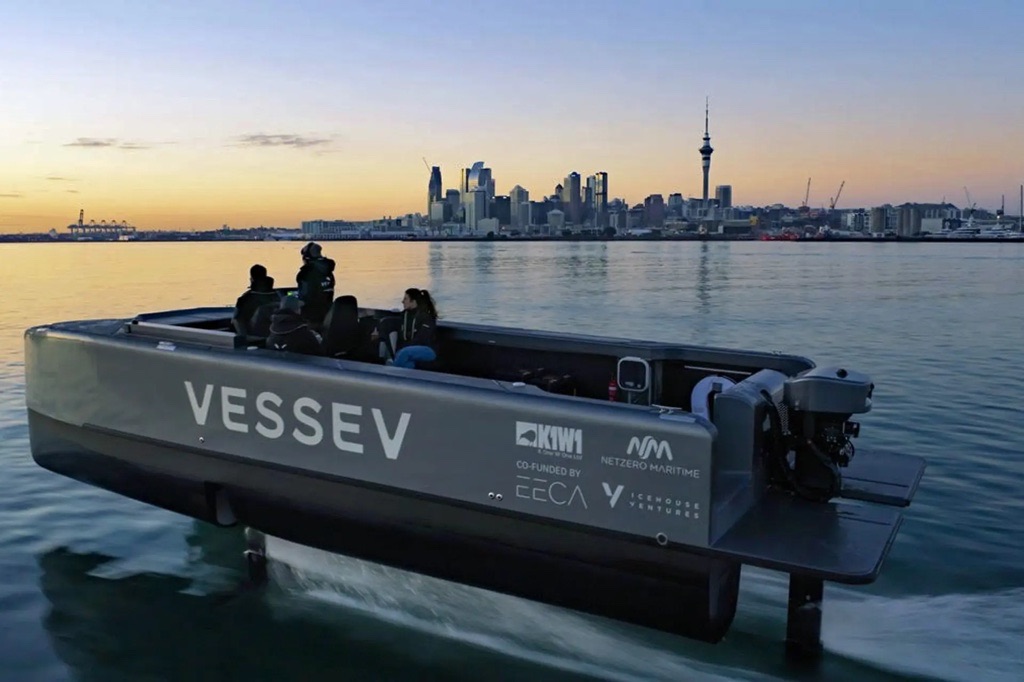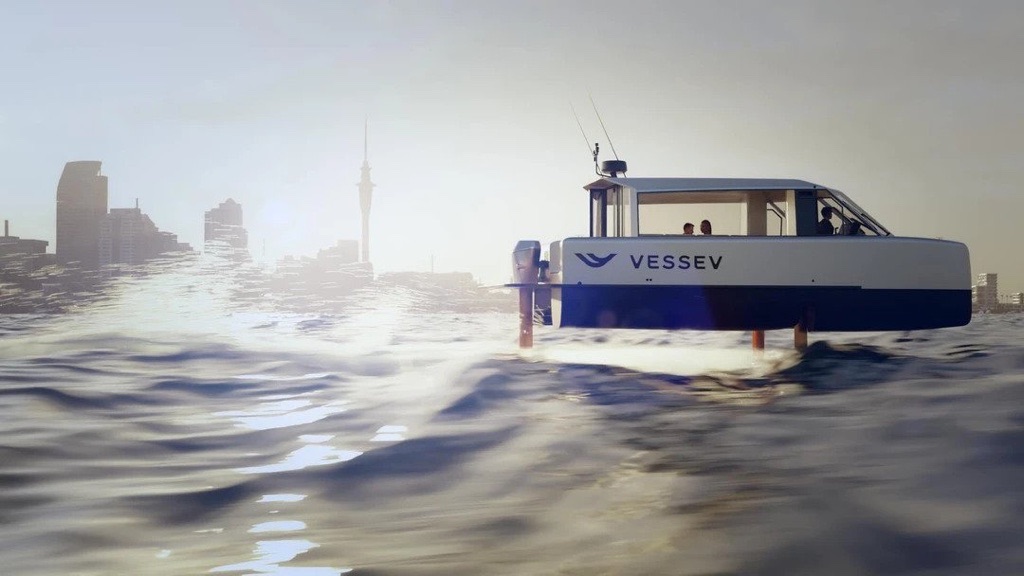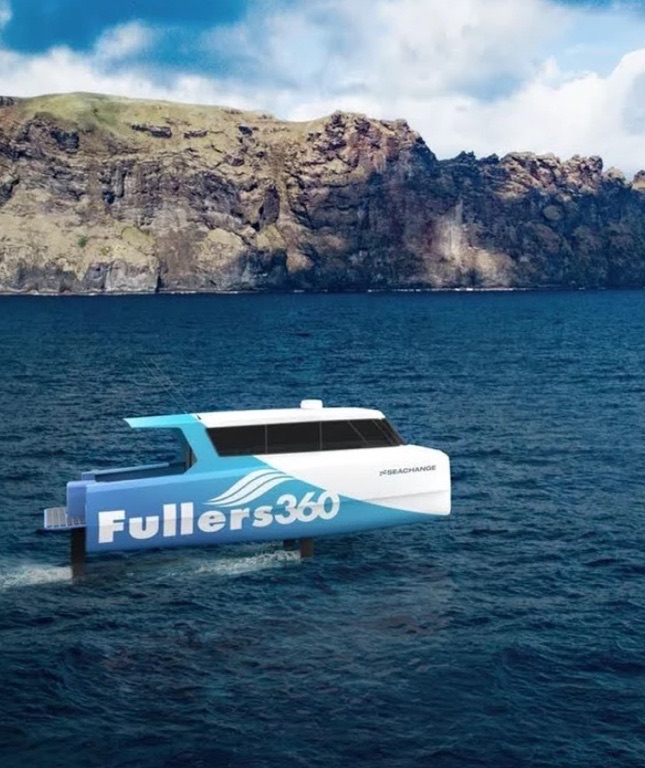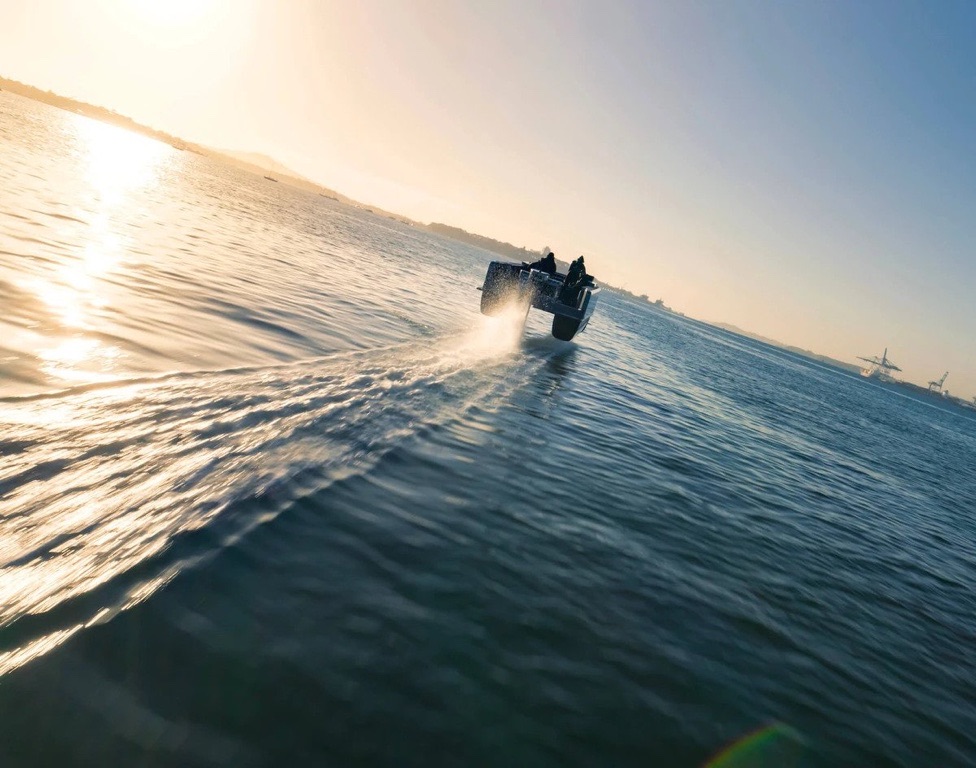
In the world of transportation, innovation is the key to a sustainable future. While electric cars and bikes have been grabbing headlines on land, a quiet revolution is taking place on our waterways. Enter the electric hydrofoil boat – a game-changer in maritime transport that’s set to redefine how we traverse our oceans, lakes, and rivers. In this post, we’ll dive deep into this exciting technology, with a spotlight on Vessev’s VS-9, the electric boat that’s making waves by literally flying above them.
What is a Hydrofoil Boat?
Before we get into the specifics of electric hydrofoils, let’s understand what a hydrofoil is.
- Definition: A hydrofoil is a wing-like structure mounted under the hull of a boat. When the boat reaches a certain speed, these foils lift the hull out of the water, much like an airplane’s wings provide lift.
- Advantage: By lifting the hull out of the water, hydrofoils dramatically reduce drag, allowing the boat to move faster and more efficiently.
Imagine a boat that doesn’t just cut through the waves but glides above them, leaving barely a ripple in its wake. That’s the magic of hydrofoils.

Enter the Vessev VS-9: Vessev’s Electric Marvel
Now, let’s talk about the star of our show – the VS-9 by Vessev, a New Zealand-based company founded by ex-Apple engineers. This isn’t just any boat; it’s a glimpse into the future of water transport.
Key Features of the Vessev VS-9:
- Electric Powertrain: The VS-9 is fully electric, producing zero emissions. It’s like a Tesla for the sea!
- Hydrofoil Technology: At speed, the VS-9’s foils lift the hull about 3 feet (1 meter) above the water.
- Efficiency: Thanks to the hydrofoils, the VS-9 uses 95% less energy compared to traditional boats. That’s a game-changer for both the environment and operating costs.
- Speed and Range: It cruises at 25 knots (28 mph/45 km/h) with a top speed of 30 knots. On a single charge, it can cover up to 50 nautical miles (57 miles/93 km).
- Capacity: The VS-9 can comfortably carry 10 passengers.
- Smooth Sailing: The advanced foil system adapts to water conditions, ensuring a stable ride even in rough weather.
-

Vessev VS-9
The Tech Behind the Magic: Vessev VS-9 Specifications
| Feature | Specification |
|---|---|
| Length | 29.4 ft (8.95 m) |
| Weight (fully loaded) | 8,000 lb (3,629 kg) |
| Passenger Capacity | 10 |
| Cruising Speed | 25 knots (28 mph/45 km/h) |
| Top Speed | 30 knots (35 mph/55 km/h) |
| Range at Cruising Speed | 50 nautical miles (57 miles/93 km) |
| Charging Rate (DC) | 0.8 nautical miles per minute |
| Starting Price | US$620,000 |
Why Electric Hydrofoils are the Future
1. Eco-Friendly Transport
- Zero Emissions: Electric boats produce no direct emissions, helping to combat climate change.
- Reduced Wake: Hydrofoils create minimal wake, reducing shoreline erosion and disturbance to marine life.
2. Cost-Effective Operations
- Lower Fuel Costs: The VS-9 costs 25 times less fuel than a traditional chase boat.
- Reduced Maintenance: Electric motors have fewer moving parts, meaning lower maintenance costs over time.
3. Passenger Comfort
- Stable Ride: The adaptive foils ensure a smooth journey, even in choppy conditions. You could sip champagne without spilling a drop!
- Quiet Operation: No noisy engines means you can enjoy the sound of the waves, not the roar of a motor.
4. Versatility
- Commuting: Imagine your daily commute being a serene glide across the water instead of a traffic jam.
- Tourism: The VS-9 is already set to revolutionize tourism in New Zealand with Fullers360.
- Inter-island Transport: Perfect for island communities, reducing reliance on fossil fuels.
-

Vessev VS – 9
The Road (or Sea) Ahead
Vessel isn’t stopping with the VS-9. They’re already working on the VS-18, aiming to transport 100 passengers. This isn’t just about pleasure boats; it’s about transforming public water transport.
Eric Laakman, Vessev’s CEO and an ex-Apple Watch lead, envisions this as part of a global shift to sustainable energy. He calls it the “Rivian of the Sea,” drawing parallels to the electric truck maker shaking up the automotive world.
Challenges and Questions
Of course, every new technology faces hurdles:
- Scaling Up: Can hydrofoil tech work effectively for larger vessels like ferries?
- Infrastructure: While marinas have power, widespread adoption will need robust charging networks.
- Weather Conditions: How will these boats perform in extreme weather or very rough seas?
- Cost: At over $600,000, the VS-9 is an investment. Will prices drop as technology advances?
Conclusion: A Sea Change in Transport
The VS-9 and electric hydrofoils represent more than just cool tech; they’re a paradigm shift in how we view water transport. They offer a triple win:
- Environmental: Drastically reduced emissions and wake.
- Economic: Lower fuel and maintenance costs.
- Experiential: A smoother, quieter, more enjoyable journey.
As our cities grow and our climate changes, solutions like the VS-9 aren’t just nice-to-haves; they’re necessities. Whether it’s commuting in coastal cities, ferrying tourists, or connecting island communities, electric hydrofoils could be the key to sustainable, efficient water transport.
So, the next time you’re stuck in traffic or on a noisy, fuel-guzzling ferry, dream of gliding above the waves on a VS-9. The future of water transport is here, and it’s electrifying!
Your Turn!
What do you think about electric hydrofoil boats? Can you see yourself commuting on one, or taking a VS-9 tour on your next vacation? Share your thoughts in the comments below – I’d love to hear your perspective on this wave of the future!
